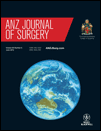The Changing Role Of Radiation Therapy In The Management Of Rectal Cancer
The incidence of rectal cancer in Australia and New Zealand is one of the highest in the Western world, with approximately 4000 cases diagnosed annually. The standard therapy for resectable disease has traditionally been surgery, and radiation therapy was reserved for patients with recurrent or inoperable disease. The role of adjuvant radiation therapy first gained some attention from retrospective reviews such as the one by Hoskins et al., which showed a reduction in the rate of local recurrence in adjuvantly treated patients as compared with historical controls. 1 This benefit was most obvious in patients having tumours penetrating through the bowel wall with or without nodal metastases (i.e. stage II and III tumours). This was soon followed by a series of randomized trials that confirmed the reduction in local recurrence rates but showed no evidence of a survival improvement. 2–5 With the introduction of chemotherapy as an adjuvant for colon cancer, the question of survival improvement for rectal cancer with combined adjuvant chemoradiation therapy became pertinent. The ground-breaking randomized study by Krook et al. confirmed that adding chemotherapy to adjuvant radiation resulted in a significant survival gain, and it immediately resulted in combined postoperative therapy becoming the standard adjuvant for rectal cancer. 6
What was initially not recognized by the Krook et al. study, but which soon became evident from other studies such as that by O’Connell et al., was that with the increase in modalities came an increase in complications. 7 In the report by Chen et al. up to 35% of patients treated with postoperative combined adjuvant therapy developed significant problems, mostly involving the small bowel. 8 The prospect of patients having postoperative adjuvant therapy became a matter of concern to colorectal surgeons.
The question of preoperative adjuvant therapy was then revisited. The Europeans had been using this approach for some years, reporting acceptable toxicity when compared with postoperative therapy, and reduced local recurrence. The problem was who should one treat? With the introduction of endorectal ultrasound and better quality computed tomography and magnetic resonance imaging technology it was possible to stage patients more accurately prior to surgery. The group at the MD Anderson Hospital in Houston first reported excellent responses of locally advanced rectal cancer to preoperative combined therapy: 29% of T3 tumours achieved complete response and without the toxicity of postoperative therapy. 9 This regimen involved 5 weeks of radiation therapy together with continuous infusion chemotherapy. Even the late toxicity of these treated patients appeared to be superior to those treated postoperatively. These findings have recently been confirmed in a prospective phase II study performed in Australia under the auspices of the Trans-Tasman Radiation Oncology Group. 10 In 1997 a large randomized study from the Swedish Rectal Cancer Study Group showed a survival benefit for preoperative radiation therapy alone with acceptable toxicity. 11 The preoperative regimen used 25 Gy in five fractions and surgery was performed 1 week later.
In this issue the article by Stevens et al. reflects a change in referral patterns seen in most Australian and New Zealand centres. 12 Not only is there an increase in patients referred for radiation therapy, but also there is a change in the indication for referral and a steady increase in patients receiving concurrent chemotherapy. Whereas in the 1980s most radiation therapy was aimed at palliative patients, the change was to postoperative radiation therapy in the early 1990s and then to preoperative radiation therapy in the late 1990s. What is still uncertain at this stage is the optimum form of therapy in the preoperative setting. We believe that preoperative combined therapy is safe but it has never been tested in a randomized trial. The Swedish regimen of five fractions of radiation alone has been shown to improve survival in a randomized trial but is it as safe as 5 weeks of combined-modality preoperative therapy? These questions will determine the optimum adjuvant therapy for this disease and will be the subject of a randomized trial to be conducted in Australia and New Zealand under the auspices of the Trans-Tasman Radiation Oncology Group and the Australasian Gastrointestinal Trials Group.
In summary, we have a changing pattern of practice involving radiation therapy for rectal cancer. Whereas some of this shift has been influenced by clinical trials, clinician personal experience has also played a dominant role. It is now doubtful whether the current preferred approach of preoperative combined adjuvant therapy will ever be compared in a randomized trial with postoperative combined adjuvant therapy.
Queensland Radium Institute B. H. BURMEISTER
South Brisbane
Queensland
Australia




